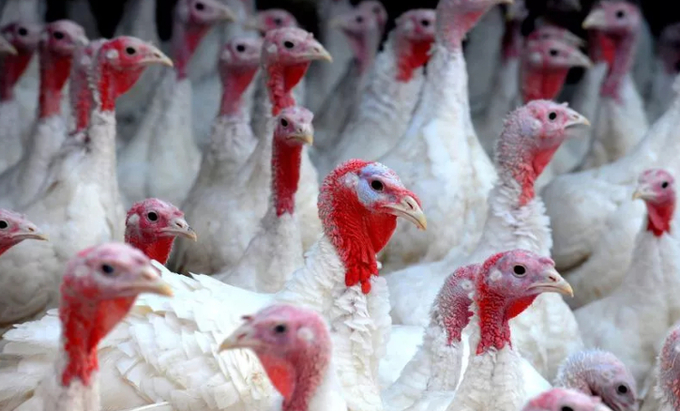November 27, 2025 | 08:19 GMT +7
November 27, 2025 | 08:19 GMT +7
Hotline: 0913.378.918
November 27, 2025 | 08:19 GMT +7
Hotline: 0913.378.918

The bird flu outbreak could spell a Christmas without turkey dinner for Brits this year, farmers have warned. The worst bird flu outbreak in UK history has already led to three million turkeys being culled as part of efforts to keep the disease under control. Special protection zones have been set up in Norfolk, Suffolk and parts of Essex as well as across the entirety of south-west England to protect the remaining livestock . Photo: Owen Humphreys/PA Wire
This year’s deadly avian flu outbreak has busted through all previous records, killing so many birds that shortages are contributing to egg and poultry price increases for U.S. consumers who are already plagued by food inflation not seen in 40 years.
Here’s the situation report:
The highly pathogenic, highly contagious avian flu has led to the deaths of 52.7 million birds between February and December. That exceeds the previous record of 50 million during 2014-15.
Only one known person has tested positive for avian influenza A(H5) virus (H5 bird flu) in the U.S., as reported by Colorado and confirmed by CDC. This case occurred in a person who had direct exposure to poultry and was involved last April in the culling (depopulating) of poultry with presumptive H5N1 bird flu.
That person reported fatigue for a few days as their only symptom and has since recovered. The person was isolated and treated with the influenza antiviral drug oseltamivir.
Avian flu kills some of the birds, but most are culled as the only that’s the only method known to stop the virus from spreading. That meant that millions of chickens and turkeys that were raised commercially for eggs or meat were lost to the disease.
The virus is 100 percent fatal and spreads quickly through droppings, contaminated feed or water, or saliva.
Avian influenza (AI) is caused by the influenza type A virus which can infect poultry (such as chickens, turkeys, pheasants, quail, domestic ducks, geese, and guinea fowl) and wild birds (especially waterfowl).
AI viruses are classified by a combination of two groups of proteins: hemagglutinin or “H” proteins, of which there are 16 (H1–H16), and neuraminidase or “N” proteins, of which there are 9 (N1–N9). AI viruses are further classified by their pathogenicity — the ability of a particular virus strain to produce disease in domestic chickens.
Highly pathogenic avian influenza (HPAI) virus strains are extremely infectious, often fatal to chickens, and can spread rapidly from flock to flock.
Low pathogenicity avian influenza (LPAI) virus strains occur naturally in wild migratory waterfowl and shorebirds without causing illness. LPAI can infect domestic poultry, creating little or no signs of illness.
The H5Ni virus was first found in domestic waterfowl in Southern China in 1996 and has since spread around the world. This year’s record in the U.S. includes 46 states and according to USDA’s Animal and Plant Health Inspection Service (APHIS) was reached when the virus struck three large commercial turkey flocks in South Dakota and one large egg-laying operation in Nebraska.
Worldwide 160 million birds have been killed during the past year by the virus and almost 80 different bird species have been affected. Hungary reported an H5N1 outbreak in poultry, its first since June, according to a notification from the World Organization for Animal Health (WOAH). The virus hit a farm in Bekes County in the southwestern part of the country that houses 3,080 birds.
(FSN)

(VAN) A new study reveals how the simultaneous effects of ocean acidification, salinity and loss of oxygen are making the world more fragile.

(VAN) Hopes are growing that the creation of the first 3D turkey gut model could be a turning point in the battle against the virulent blackhead disease.

(VAN) Tyson, America’s biggest meat supplier, plans to shutter one of its largest beef processing plants as the industry continues to struggle with low cattle supplies and political pressure from Washington.

(VAN) New FAO study shows how digital solutions are empowering farmers and fishers to prevent losses and build resilient agrifood systems.

(VAN) Brazil's COP30 presidency pushed through a compromise climate deal on Saturday that would boost finance for poor nations coping with global warming but that omitted any mention of the fossil fuels driving it.

(VAN) Poultry farmers in the UK have been warned that they could face one of the worst winters yet for bird flu.

(VAN) Prices of main-crop paddy have risen sharply, with jasmine rice hitting 16,100 baht per tonne — the highest level in years.